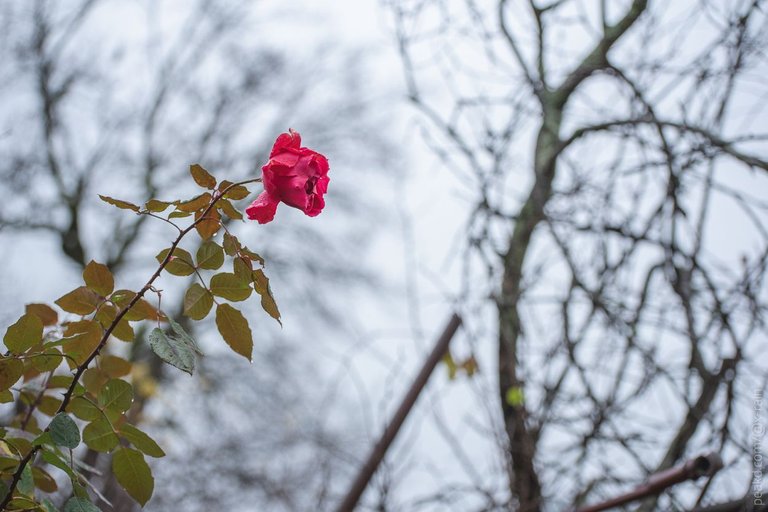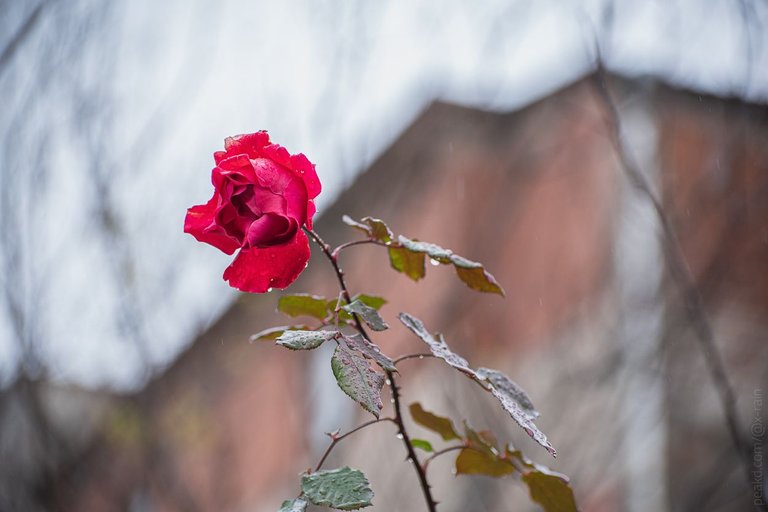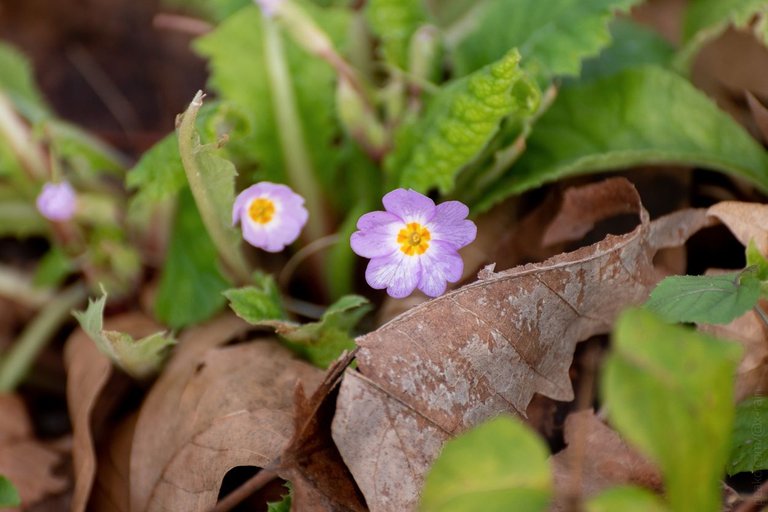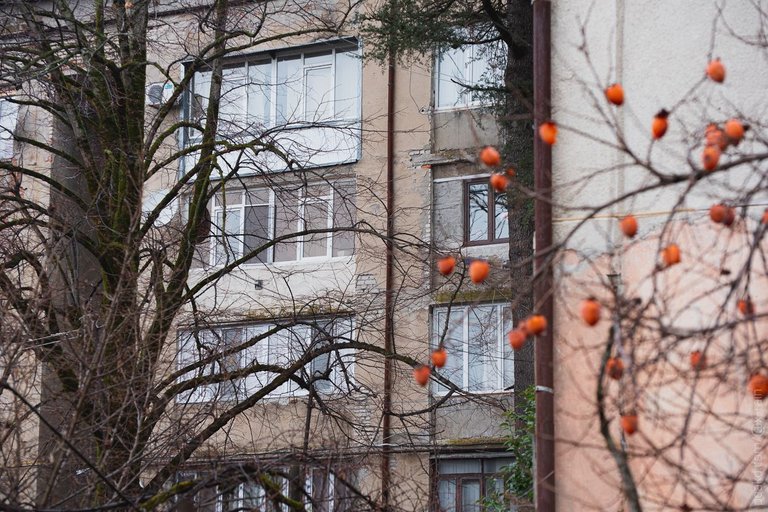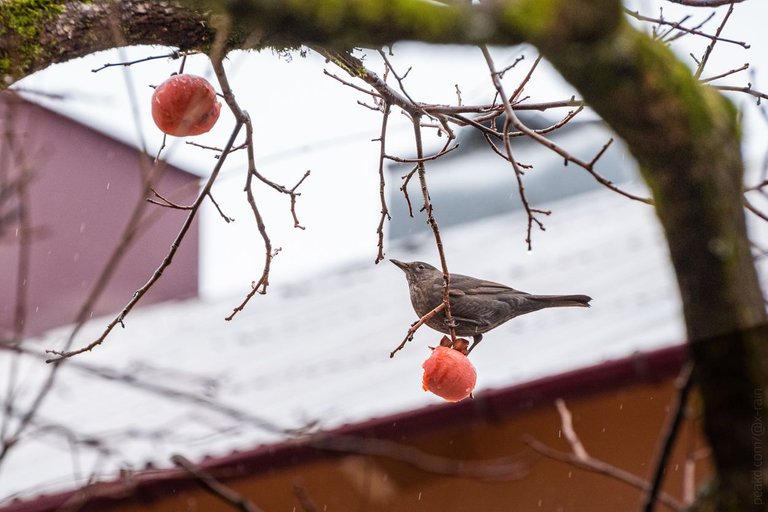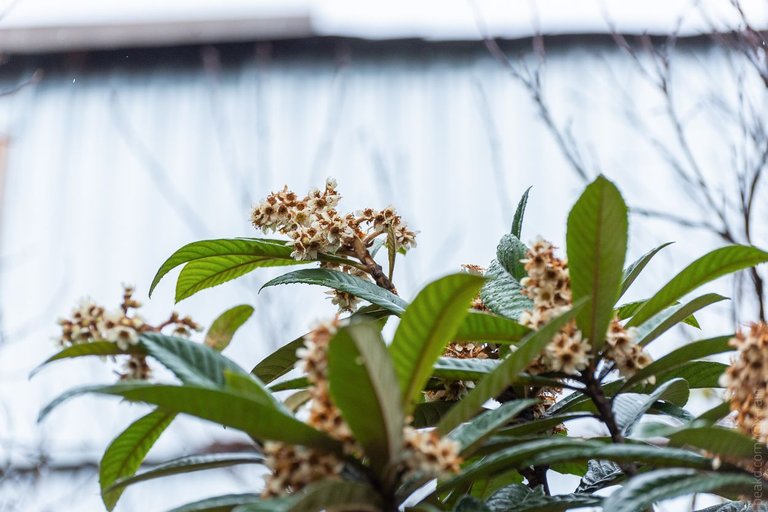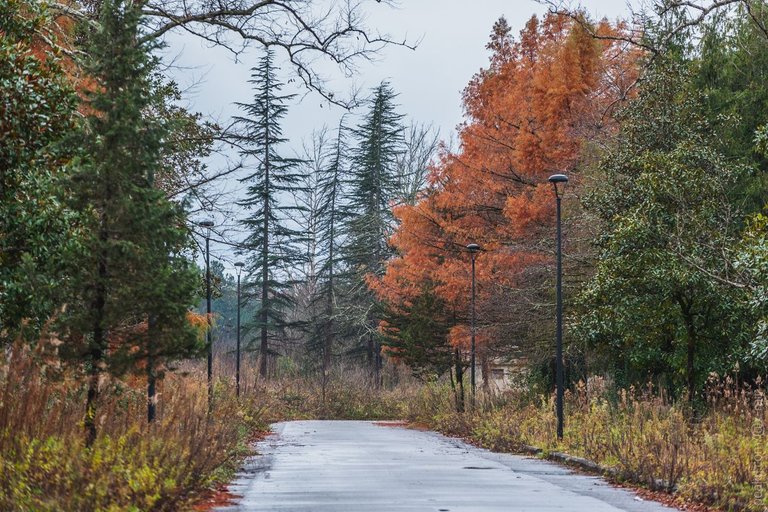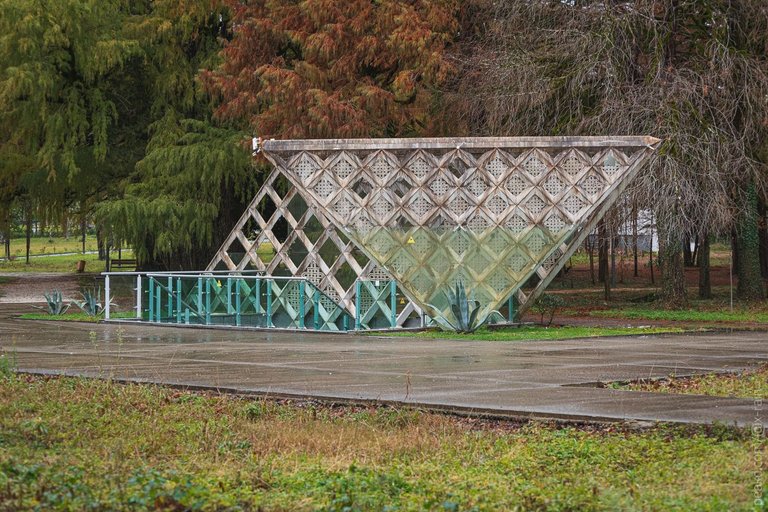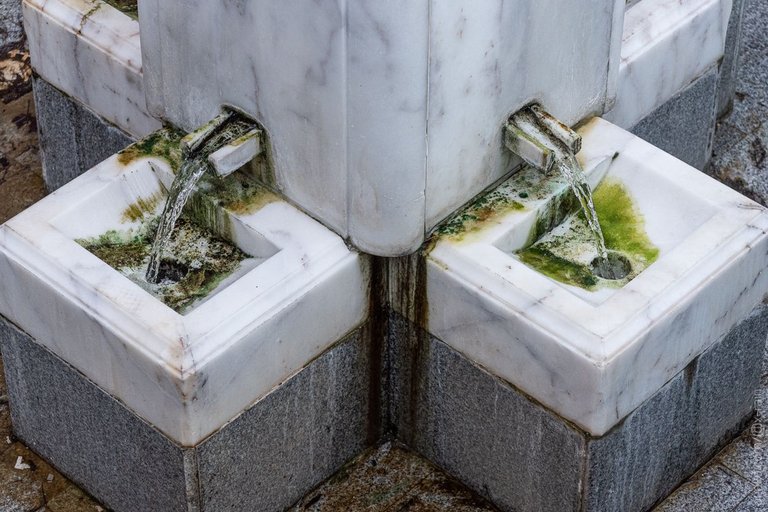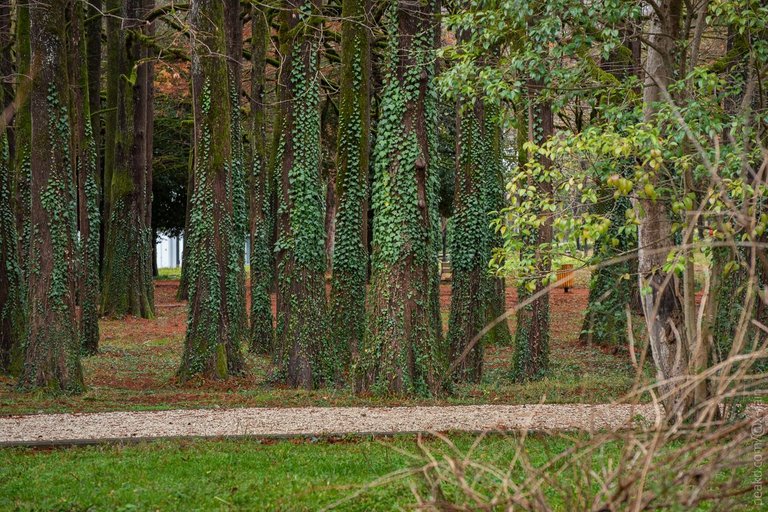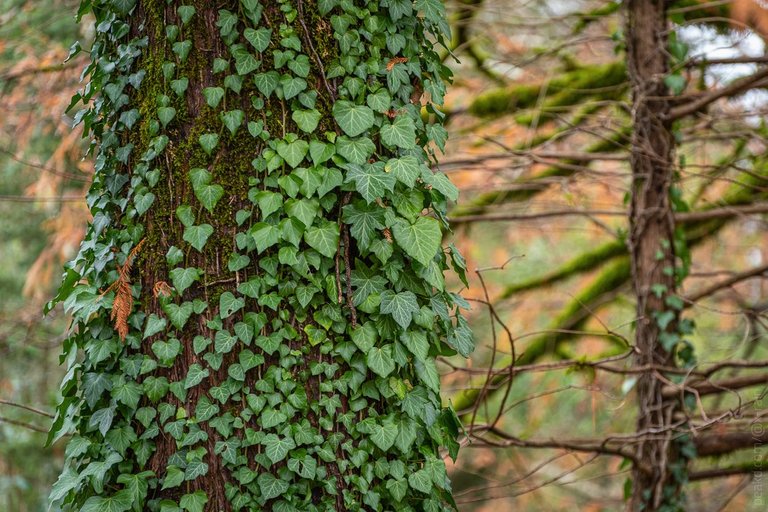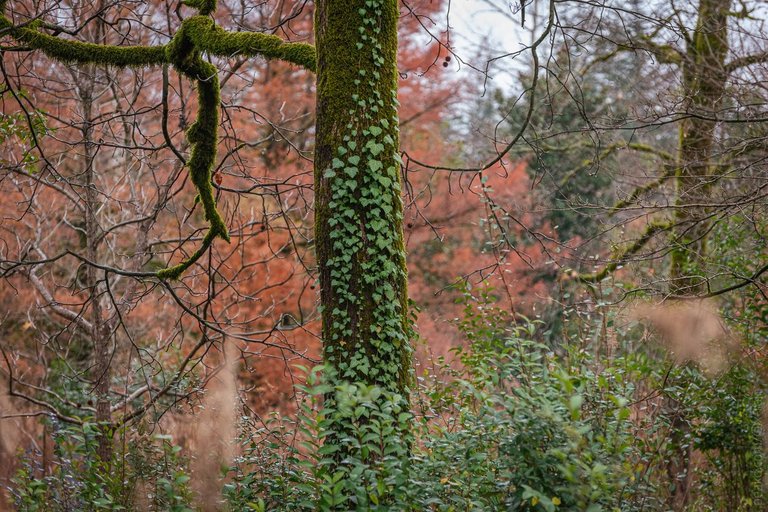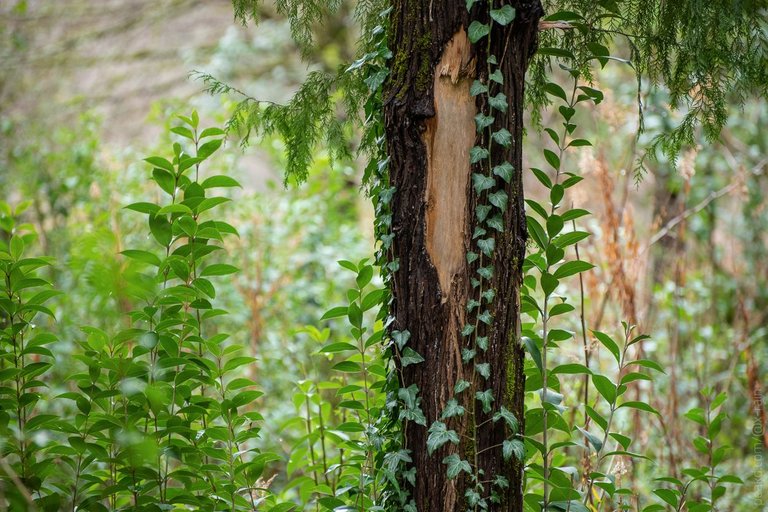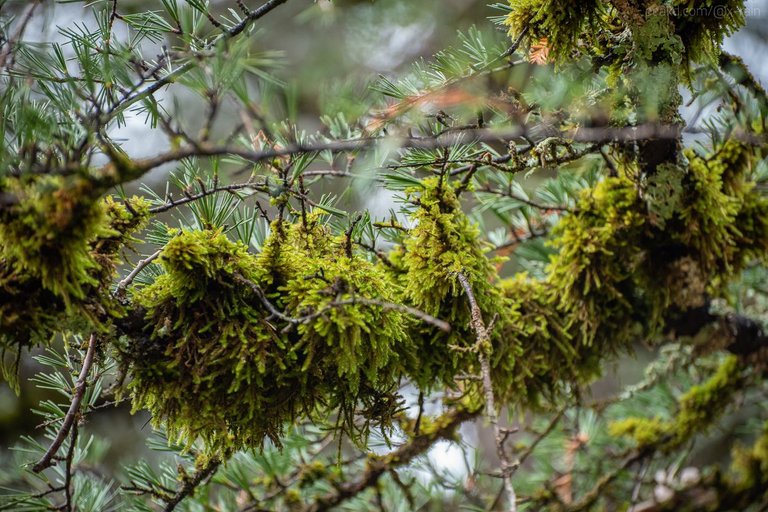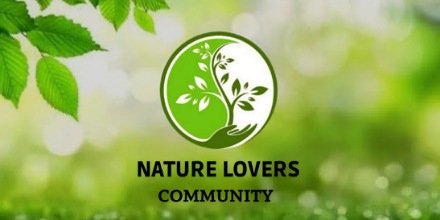Winter in the western part of Georgia is mild. Sometimes, it's so mild that autumn smoothly turns into spring like it is in 2023.

Tskaltubo, Georgia on Google.maps
For example, this autumn rose was blooming on January 8, 2023:
A lone flower in the yard of an old Soviet multi-apartment building in Tskaltubo, Georgia.
At the same time, early bloomers are already on their way. For example, daffodils in Tskaltubo gardens have started blooming:
Another early bloomer, a wild variety this time:
Primroses (Primula ?vulgaris?) among fallen oak leaves, very first flowers. Wild cyclamens bloom very early too in western Georgia but I didn't find them in Tskaltubo.
Autumn fruits are still on branches. Persimmons:
Persimmons were already ending its fruiting season in early January but citruses (mandarins and lemons) were in full power. I have a nice image of mandarins on the branch taken on January 11 but the weather was sunny then so the image doesn't fit the cloudy mood of the post so let me skip citruses and show you another fruit tree:
This is loquat tree (Eriobotrya japonica) which always blooms in winter in Georgia. It's originated from Eastern Asia but it grows everywhere in Georgia, especially in the west of the country. If you've never tried its fruits, you should, there are delicious. Loquats are poorly transported so the fruit is not well known in the world. Find more details on wiki.
There is a large park in Tskaltubo that embraces the main resource of the city, its radon springs. In the Soviet time, crowds of vacationing miners, metallurgists, milkmaids, etc used to walk along its alleys.
In the park bathhouses, they took radon baths and drank radon water under the supervision of Soviet doctors. Today, people also come here for treatment, from Azerbaijan, Ukraine, Russia, and Georgia itself.
You don't have to be a patient to try this water. For example, this bizarre building is a radon spring open to every stranger:
Down the stair, there is radon water:
The temperature of the water is about 34 degrees all year round so I didn't get excited about drinking - it was like water from a glass warmed by the sun.
I've not personally figured out whether the radon water is healing or it is all a placebo effect. But the locals say that many people came here in wheelchairs and left on crutches, and someone threw away the crutches as well... But let's focus on the vegetation of the park.
Ivy thrives in Tskaltubo, no matter if it's summer or winter:
Another dominator is privet tree (Ligustrum lucidum), it's everywhere in Tskaltubo, in the park, streets, wastelands. Look at these fresh privet shoots:
This privet species is ideal for kids crafting slingshots and arrows. Its fruits were used as projectiles (bullets) for blowguns in my childhood in Sukhumi, Georgia, that's why kids called the tree pulka (from Russian "a little bullet", "пулька").
I think they introduced a tree-living variery moss into the park since I've seen nowhere in Georgia as much tree moss as in Tskaltubo:
Moss on larch branches in Tskaltubo central park.
Georgia isn't a large country, it's size is just the Netherlands + Belgium together. But the climate is the most diverse. While I was enjoying lush vegetation and even blooming in the western lowland where Tskaltubo is situated, it was snowing in Tbilisi (the eastern part of the country) and frost reached -10 at night. Such early blooming isn't an yearly thing as well as snow disaster that happened in Tbilisi recently. But, yeah, mountains make their work. There are steppes in far east Georgia, highlands of the South are sometimes referred as Georgian Siberia, and the climate of Batumi City is humid subtropical. You can find wild bilberries in the alpine zone of the mountains, and South American feijoa in gardens in the West... Georgia is heaven for nature lovers!
I took these images with a Nikkor 70-300mm on a full-frame DSLR Nikon D750 on January 8 and 9, 2023 in Tskaltubo, Georgia
